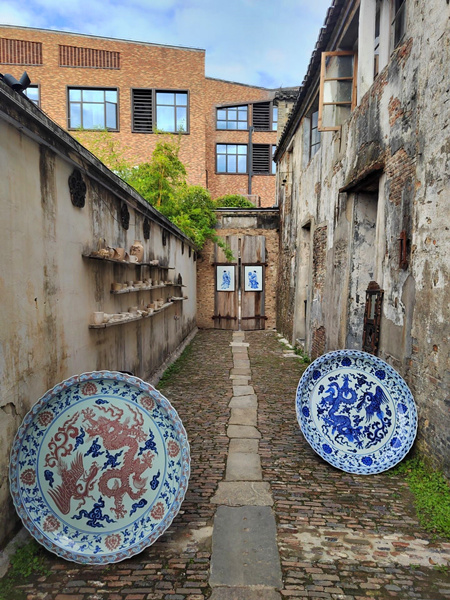

In addition to the walls, the streets were also paved with a large number of original kiln bricks from a century ago. "On average, more than 140 bricks of various sizes are laid per square meter, some of which are glazed, adding to the visual richness," said Lyu Xiaolong, the executive manager of the renovation project.
The art of brickwork is even more prominently displayed at the Jingdezhen Imperial Kiln Museum in the Taoyangli historical and cultural district, which epitomizes the architectural aesthetics of "every square centimeter is unique".
The design inspiration for the Imperial Kiln Museum comes from traditional egg-shaped kilns and consists of eight multi-curved arch structures. Unlike simple geometric shapes, the museum employs complex hyperbolic surfaces, requiring the use of staggered brickwork and the assistance of gravity to complete the construction.
With the 1.9 million imitation antique bricks of various types and rich colors produced by the renovation team, along with the collected 0.9 million old kiln bricks, 11 prototype experiments were conducted, resulting in several improvements. The construction of the museum utilizes a special kiln brick dry-hanging technique, which is a patented technology of the company.